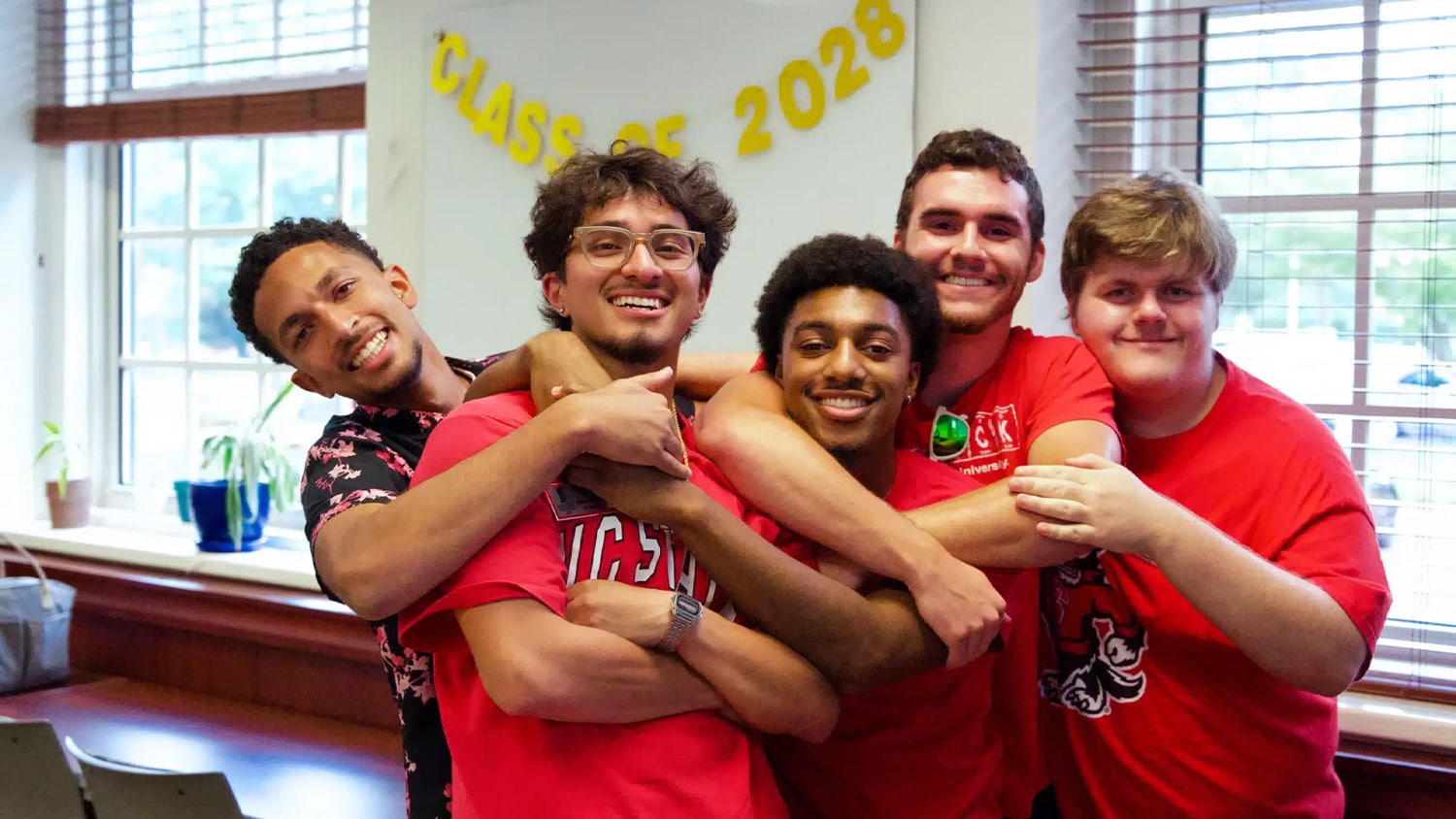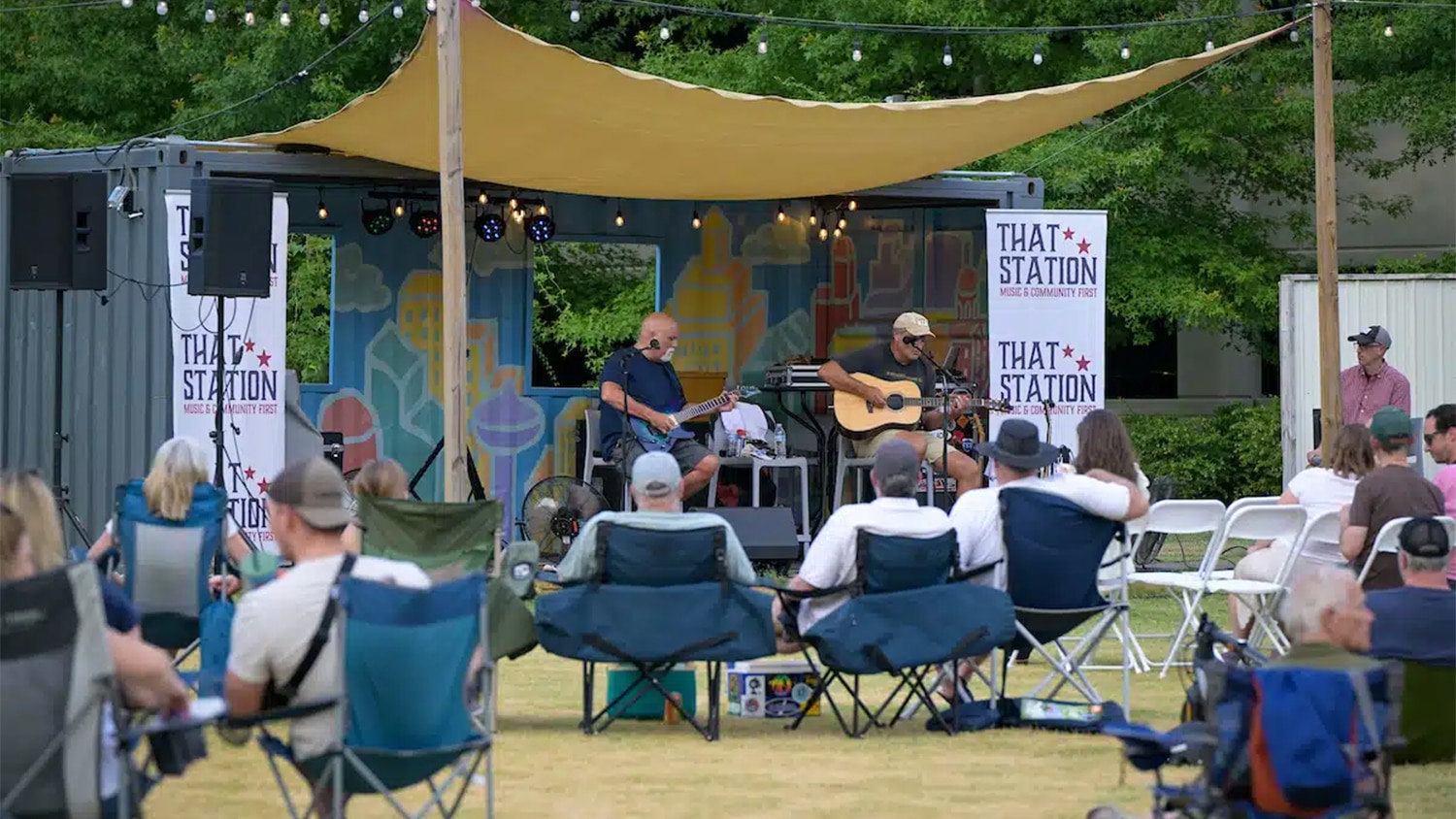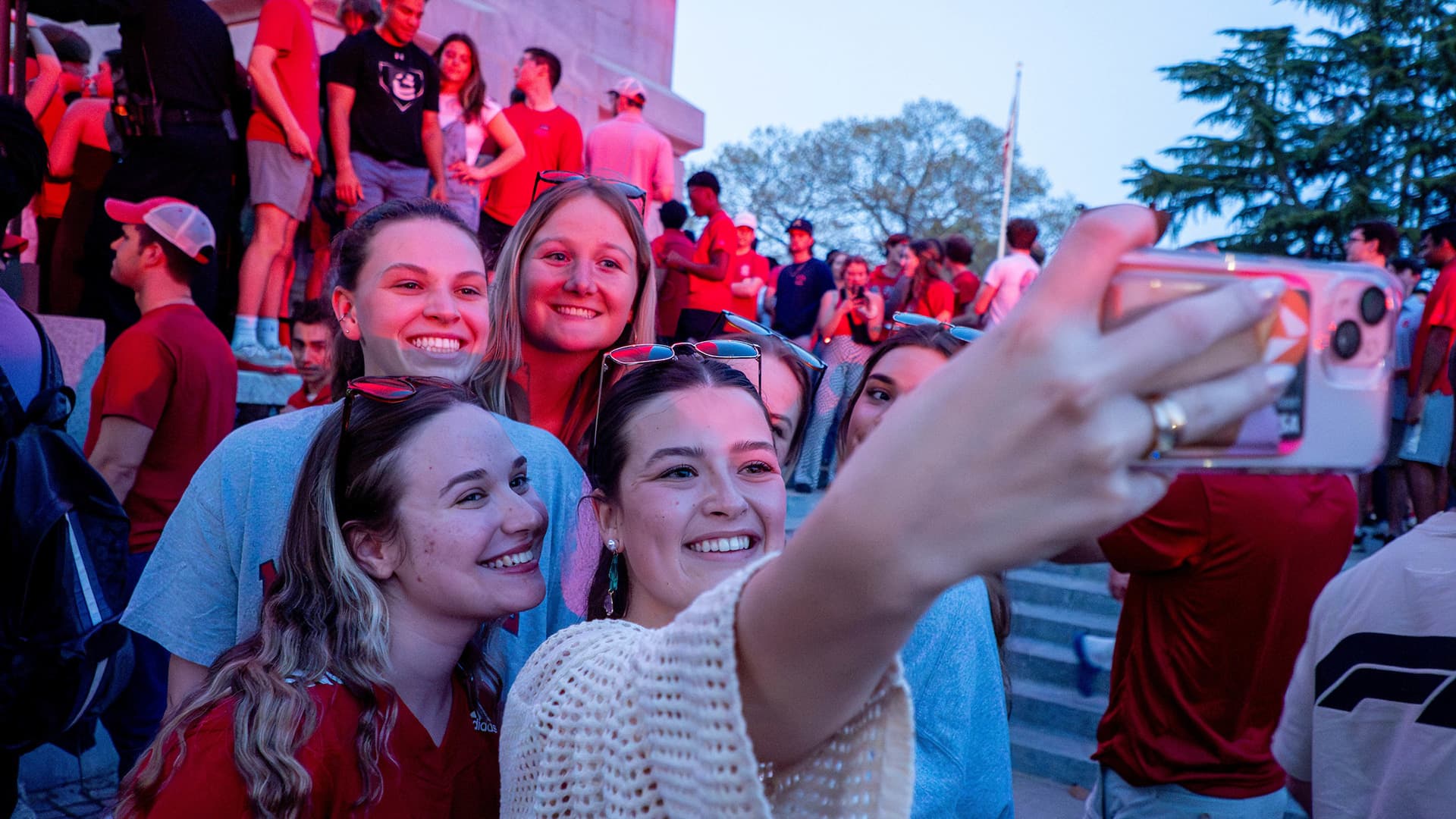A Makers’ Place
MakerFaire, the nationwide network of do-it-yourself showcases, is a celebration of all things made. And NC State is the university where ideas become reality.
The two come together this weekend at Maker Faire North Carolina, which will bring 10,000 thinkers and doers to the North Carolina State Fairgrounds.
Among them will be a group of NC State students and recent graduates who’ve turned plywood, simple circuits and plastic into tools for creation, expression and personal safety.
Two recent grads — Austin Carpenter and Jonathan Gregory — will showcase their 3D scanner at the Maker Faire. The project, spurred by a request from the leaders of the Makerspace at Hunt Library, exposed the pair to a process they’ll likely repeat in their engineering careers. They spent the first semester of the 2013-2014 school year designing the scanner, a trial-and-error effort that saw them abandon designs for being too big or otherwise impractical.
In the spring, they connected with a team of industrial design students who built the scanner based on their specifications. Constructed of tile and plywood, the scanner looks a bit like the teleportation system from the old Star Trek television show. A person stands on a rotating platform as the scanner takes continuous photos. The 90-second scan — about two rotations long — produces a file that a 3D printer can read and turn into an action figure.
What can you do with a 3D scanner? According to Carpenter, one emerging application of the technology is in medicine: 3D scans are being used to print casts that conform precisely to a broken limb and use ultrasound technology to spur bone growth.
But utility wasn’t the primary reason Carpenter and Gregory chose to build the scanner.
“It’s cutting-edge,” Carpenter said. “Ten years ago, this wasn’t really a thing. So it’s just really exciting to be on the cutting edge of technology.”
Emergency Assistance, at the Push of a Button

In an emergency, even a quick phone call or text message may take too long. That’s why recent electrical engineering graduate Tia Simpson and rising electrical and computer engineering senior Bradford Ingersoll have developed a wearable system that enables emergency notification at the push of a button.
At Maker Faire North Carolina, Simpson and Ingersoll will demonstrate the Konnect, a Bluetooth-enabled simple circuit that triggers a text message with a user’s GPS coordinates.
Simpson and Ingersoll worked through several iterations of the Konnect in the Entrepreneurship Initiative Garage on NC State’s Centennial Campus. They considered building a version that used voice-recognition software to identify a user in distress, but they dismissed it as impractical because of power and reliability concerns.
But the wearable concept they came up with has tested well and has drawn positive feedback from judges in campus entrepreneurship contests, Simpson said. The current Konnect prototype houses the circuit inside a plastic bracelet, but the system’s size — a little bigger than a watch battery — would make a wristwatch or other accessory a possibility.
Message in a Bracelet

New grads Corey Meade (computer engineering) and Kyle McKenzie’s (electrical engineering) Maker Faire project came from the unlikely intersection of two trends: the emergence of 3D printing and the popularity of Silly Bandz, the bracelets children compulsively exchange at school.
For their senior engineering design studio, Meade and McKenzie sought to make a tradable 3D-printed bracelet that communicates. Meade developed a Web app that converts audio data — words spoken into a microphone — into a file readable by a 3D printer. The printed bracelet, which looks like a QR code come to life, can then be read, decoding the original spoken message.
Meade and McKenzie envision Web and smartphone apps that would let kids encode messages in plastic, print them and trade them with friends. They’ve experimented with different types of plastic for the bracelet itself and have applied for a provisional patent for their work.
“We hope there’s a future for it,” McKenzie says. “We’re not sure if there’s a market right now because the printers aren’t available everywhere. But there are some professors we’ve shown this to who said, ‘My kids would totally take this to school, and all their friends would be super-excited about it.’”
- Categories:


